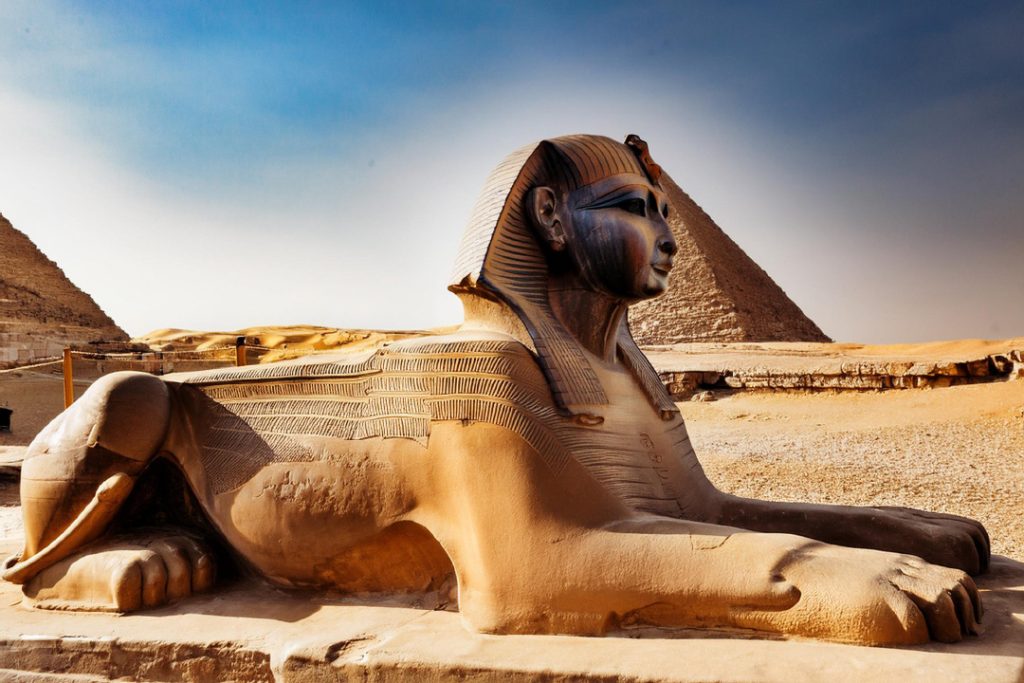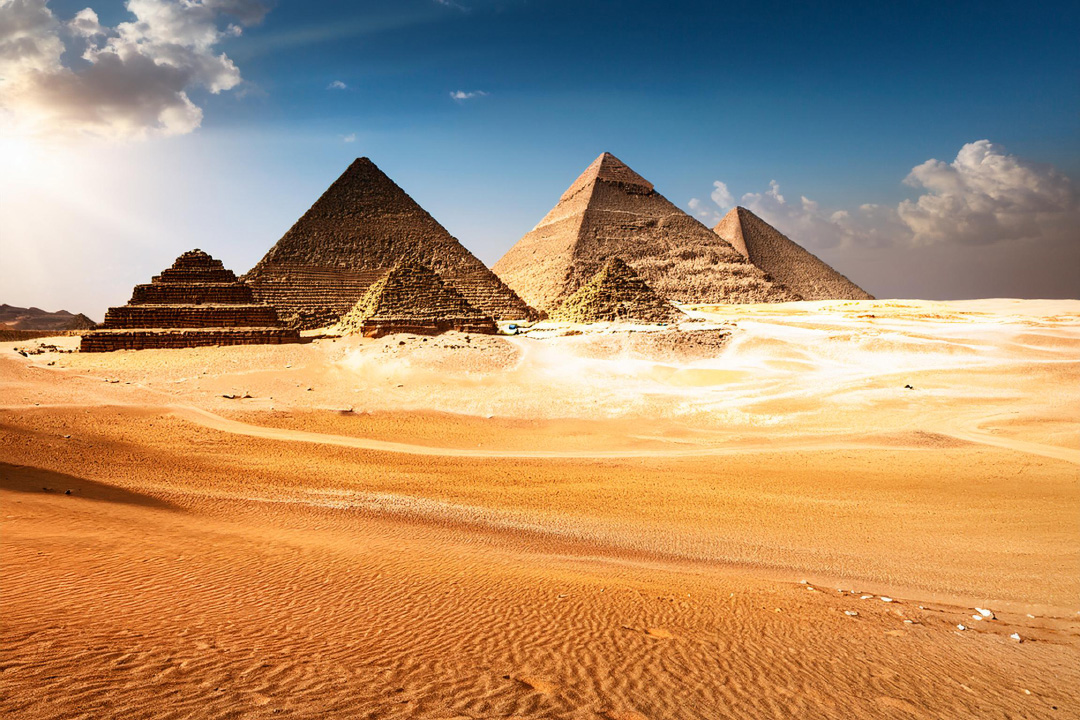Meet the Mighty Pharaohs of Ancient Egypt
Why Ancient Egypt Still Wow Us
Ancient Egypt is like history’s greatest magic trick – it left us mesmerized. Stretching over a whopping 3,000 years, it shaped our world in art, architecture, and those mysterious hieroglyphics. Ever wondered who built those gigantic pyramids? Yep, that was them. And they didn’t stop there. Their contributions are still teaching us loads of fun facts. Digging into what made Ancient Egypt tick helps us understand a huge chunk of human history. Curious for more cool nuggets? Check out more on Ancient Egypt.
| Time Period | Wow Moments |
|---|---|
| Old Kingdom | Built Pyramids of Giza (yup, the big ones) |
| Middle Kingdom | Went nuts with literature and art |
| New Kingdom | Created a vast empire |
Pharaohs: The Ultra Bosses of Ancient Egypt
Pharaohs were not just any rulers; they were like rockstars chosen by the gods. People believed they carried divine approval to lead, fight, and pray. These mega-leaders had a super important job – keeping things balanced (they called it Ma’at).
Pharaohs didn’t just lead; they sprinkled their magic on the culture. They ordered the building of epic temples and monuments, some of which still stand and fill us with awe. They recorded their grand tales with care, leaving behind a treasure trove for archaeologists. Want to dig deeper into these titanic achievements? Peek into what the pharaohs built.
| Pharaoh | Ruled When? | Claim to Fame |
|---|---|---|
| King Tutankhamun | 1332-1323 BC | Brought back the many gods |
| Cleopatra VII | 51-30 BC | The last Egyptian ruler; buddied up with Rome |
| Ramses II | 1279-1213 BC | Built big, fought hard |
Seeing what pharaohs did and how they ruled helps us get why Ancient Egypt keeps us all spellbound. If you wanna see how Egypt stacked up against other ancient heavy-hitters, check out Roman Empire and Life in Ancient Rome. Fascinating, right?
Keeping Pharaoh History Alive
Ancient Egypt has left us a tapestry of fascinating stories, all thanks to the efforts made in keeping the history of the pharaohs alive. Let’s dig into some of the cool archaeological finds and the nifty tricks used to preserve these tales.

Big Discoveries
Believe it or not, some of the most incredible finds are right out of an adventure movie. These discoveries give us peeks into the lives of pharaohs, and each one is like a piece of a giant puzzle. Check out a few gems that changed the way we see Ancient Egypt:
| Discovery | Location | Year | Why It Matters |
|---|---|---|---|
| Tutankhamun’s Tomb | Valley of the Kings | 1922 | Loads of treasures and artifacts |
| Rosetta Stone | Rosetta | 1799 | Helped us crack the code of hieroglyphs |
| Abu Simbel Temples | Nubia | 1813 | Showcases Ramses II’s epic architecture skills |
| Valley of the Queens | Luxor | Various | Resting place of many queesn and princes |
These golden nuggets have spilled the beans on the reigns, lifestyles, and post-life practices of the pharaohs of ancient Egypt.
Tricks of the Trade
Saving the past isn’t just about finding stuff—it’s also about keeping it in tip-top shape. Here’s a peek at some tricks of the trade:
- Digging Tools: Archaeologists rely on trowels, brushes, and picks to carefully uncover artifacts without breaking anything.
- Saving Methods: Conservationists work magic to stabilize and preserve relics, using chemicals to prevent them from falling apart.
- Tech Gadgets: Gadgets like 3D scanners, X-rays, and infrared tools help examine artifacts and tombs without even touching them.
- Keeping Tabs: Detailed records and digital databases are kept to track finds and share info with researchers all over the world.
All this hard work ensures that relics are safe and sound, helping us dive deeper into the civilization of ancient Egypt. With new tech and teamwork across the globe, the stories of Egypt’s pharaohs will be around for generations to come.
Famous Pharaohs of Ancient Egypt
Let’s dive into some of the rockstars of ancient Egypt — the pharaohs who made their mark in history with their larger-than-life stories and remarkable feats.
King Tutankhamun
King Tutankhamun, or just King Tut if you’re on a first-name basis, grabbed the throne as a kid. His gig as the ruler was short and sweet, but boy, did he leave his mark! When his tomb, loaded with treasures, was uncovered in 1922, it was like opening a time capsule from ancient Egypt. His reign also hit the reset button on traditional religious practices after the big shakeup from the Amarna Period.
| Item | Fact |
|---|---|
| Name | Tutankhamun |
| Reign | c. 1332–1323 BC |
| Dynasty | 18th Dynasty |
| Big Win | Bringing back traditional religion |
Cleopatra VII
Cleopatra VII, a name that echoes through the corridors of history, was a total boss. Smart, politically savvy, and known for her high-profile love stories with Roman VIPs like Julius Caesar and Mark Antony, she was the last ruler of the Ptolemaic Kingdom. She played a diplomatic game trying to keep Egypt safe from the hungry jaws of the Roman Empire, making her a key player not just in Egyptian tales but Roman ones too.
| Item | Fact |
|---|---|
| Name | Cleopatra VII Thea Philopator |
| Reign | 51–30 BC |
| Dynasty | Ptolemaic Dynasty |
| Big Win | Savvy alliances with Rome |
Ramses II
Ramses II, famously known as Ramses the Great, was Egypt’s powerhouse. Imagine ruling for 66 years and leaving behind a legacy of colossal construction projects and military wins! He was the mastermind behind the grand temples of Abu Simbel and the Ramesseum. His era was a golden age of art, culture, and monuments that still leave us awestruck.
| Item | Fact |
|---|---|
| Name | Ramses II |
| Reign | 1279–1213 BC |
| Dynasty | 19th Dynasty |
| Big Win | Epic buildings like Abu Simbel and Ramesseum |
Meeting these royals gives us a peek into the epic scale and richness of ancient Egyptian life. Their influence on politics, religion, and culture isn’t just stuff for the history books — it shaped civilizations, including the mighty Roman Empire.
The Timeless Impact of Ancient Egypt’s Pharaohs
Ancient Egyptian pharaohs have left a legacy that still fascinates and shapes our modern world. Their influence on art, architecture, and society is profound and far-reaching.

Masters of Art and Architecture
The pharaohs were the ultimate art lovers and architecture buffs, commissioning grand structures and intricate artwork not just for beauty, but also as symbols of power, religion, and culture. Their architectural masterpieces, like the iconic pyramids and magnificent temples, aren’t just tourist attractions; they’re testaments to their engineering genius.
The pyramids, especially the Great Pyramid of Giza built for Pharaoh Khufu, stand as one of the Seven Wonders of the Ancient World. Other impressive feats include the temples of Karnak and Luxor, adorned with detailed carvings and hieroglyphs that tell stories of gods, kings, and life in ancient Egypt.
| Structure | Pharaoh | Estimated Completion |
|---|---|---|
| Great Pyramid of Giza | Khufu | 2560 BCE |
| Temple of Karnak | Multiple Pharaohs | 2055 BCE – 100 AD |
| Temple of Luxor | Amenhotep III, Ramses II | 1400 BCE |
Not content with just structures, pharaohs also commissioned paintings, sculptures, and jewelry, depicting scenes of gods, daily life, and the afterlife. These masterpieces give us priceless glimpses into ancient Egyptian civilization, making history come alive.
Shaping Our Modern World
The reach of ancient Egyptian pharaohs goes way beyond their own era. They laid down principles in mathematics, engineering, and medicine that we still use today.
Their writing system, hieroglyphics, paved the way for our understanding of ancient scripts and languages. Thanks to the Rosetta Stone, inscribed during the Ptolemaic era, we’ve deciphered these ancient texts and unlocked secrets of the past.
Cultural and religious practices from ancient Egypt, like the belief in an afterlife and mummification, have captured imaginations and inspired countless studies in religion, history, and archaeology. Their mythology and symbols pop up in modern literature, movies, and even fashion.
The concept of a centralized leadership, a society under a single ruler, mirrors various governmental systems throughout history, including the mighty Roman Empire.
In short, the legacy of Egypt’s pharaohs lives on through the art, architecture, and societal blueprints they left behind. Their contributions are still relevant and celebrated, proving that their influence transcends time and will continue to captivate future generations.
What’s Next for Preserving Pharaoh History
Keeping the ancient wonders of Egyptian pharaohs alive is a never-ending job, made doable by cool new tech and teamwork from folks around the globe. New tools and international partnerships give us a hand in understanding and protecting the tales of Egypt’s mighty rulers.
Tech Magic in Archaeology
New gadgets and gizmos are game-changers in how we dig into pharaoh history. They’ve turned old-school archaeology on its head, making it easier to explore ancient worlds without wrecking anything.
Ground-Penetrating Radar (GPR)
Ground-penetrating radar is a lifesaver for folks hunting buried treasures. Think of it as an X-ray for the Earth—spying on underground goodies without digging them up.
| Tech | What it does | Why it’s cool |
|---|---|---|
| Ground-Penetrating Radar | Peeks underground | Keeps stuff safe |
3D Scanning and Printing
With 3D scanning, we get super-detailed virtual copies of ancient relics. And 3D printing? Well, it’s like magic for bringing busted artifacts back to life. Pupils can even touch and learn from these replicas without risking originals.
| Tech | What it does | Why it’s cool |
|---|---|---|
| 3D Scanning | Makes digital look-alikes | Keeps a spotless record |
| 3D Printing | Creates replicas | Safe learning tools |
DNA Analysis
DNA analysis is like a time-traveling detective, helping us uncover the health secrets and family trees of mummies. Think CSI, Pharaoh Edition.
| Tech | What it does | Why it’s cool |
|---|---|---|
| DNA Analysis | Studies genes | Reveals ancient health |
These modern marvels let us peek into the pharaohs’ world without ruining their legacy, handing down their stories for tomorrow’s history buffs. Want more on what ancient Egypt pulled off? Check out our article on ancient Egypt’s accomplishments.
Global Teamwork FTW
Saving Egypt’s pharaoh stories takes a village—scratch that—a globe. Scholars, archaeologists, and groups from everywhere join forces to guard and study these ancient wonders.
Brainpower Partnerships
Universities and research centers team up on digs, sharing brainpower and resources for better results. Think of it as the Avengers, but for ancient history.
| Who’s Involved | Who’s Doing What | Why it Rocks |
|---|---|---|
| Brainiacs | Universities | Sharing knowledge |
Governments and NGOs
Government bodies and non-profits are the money and muscle behind many projects. They help ensure digs follow the rules and preserve history the right way.
| Who’s Involved | Who’s Doing What | Why it Rocks |
|---|---|---|
| Governments | National bodies | Funding and support |
| NGOs | Helpers | Ethical preservation |
Cultural Exchange Programs
Cultural swaps help newbie archaeologists learn the ropes and share smarts. These programs spread a global love for Egyptian heritage and foster teamwork to keep it safe.
| Who’s Involved | Who’s Doing What | Why it Rocks |
|---|---|---|
| Exchange Programs | Global archaeologists | Training and collab |
With tech and teamwork leading the charge, the future looks bright for keeping pharaoh history alive and kicking. Curious about more ancient stuff? Check out our piece on ancient Egyptian civilization.
Here some recommended links selected for you: The Best Books of the Month, Todays best Deals at Amazon, Best Sellers in Cell Phones & Accessories and last but not least the easy and great way to send a gift for the holidays: Amazon.com eGift Card (Instant Email or Text Delivery).



